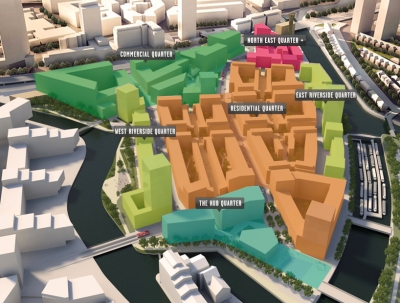a great place to live, work and play
/The Department of Planning is working on a new plan for the City of Hamilton and, although it is not ready yet (and I have not asked when it will be), it seems there is a renewed focus is on what is needed to support Hamilton as a great place to live, work and play. While that is the framework for the current City Plan, judging by the Department's online questionnaire about the City, the creative industries, for the first time, could actually be in line to receive more attention, and that is a good thing.
In the questionnaire we are asked about outdoor eating/drinking areas, street artists/entertainment, city parks and open spaces, residential development and - gasp! - taller buildings.
The creative industries often comprise small workforces of collaborators, entreperneurs, freelancers who are artists (performance and visual) and designers, as well as their suppliers.
North East Hamilton may have the greatest potential to foster the arts and culture because the real estate market is weaker there than the traditional Front/Reid/Queen Street axis. That's important too because to be sustainable into the future, the creative industries must have a model that relies more on successful production than on consumption through tourism. The creative industries need to work on a business level, and cheaper rent helps.
As it happens, there are thriving creatives at work in North East Hamilton already. Ann Spurling Photography on Princess Street, The Design Group on Angle Street, Chewstick Foundation on Elliot  image: bermuda economic development corporationStreet and, soon, DNA Creative Shoppe, also on Elliot Street. (Click on the image to see a directory of the many businesses located within the Economic Empowerment Zone of North East Hamilton.)
image: bermuda economic development corporationStreet and, soon, DNA Creative Shoppe, also on Elliot Street. (Click on the image to see a directory of the many businesses located within the Economic Empowerment Zone of North East Hamilton.)
What planning strategies can help? Flexibility when it comes to mixed uses and encouragement of live/work options: think unconventional space size, use and allocation. More difficult will be continued affordability for artists if regeneration leads to gentrification. At this point, a problem we'd love to have.
And what are the signs of success? Well, ArtPlace is in the process of developing a set of indicators to track the vibrancy of a neighbourhood. Until those are ready, ArtPlace provides these ten signs of momentum:
1 Is the neighborhood cleaner?
2 Does the neighborhood feel safer?
3 Is the neighborhood more attractive?
4 Are there fewer vacancies?
5 Are there more people on the sidewalks?
6 Is there a popular new outdoor gathering place?
7 Is there a popular new indoor gathering place?
8 Is there new evidence of arts activity?
9 Has the local press reported on it positively?
10 Do people in the neighborhood generally agree that the neighborhood is getting better?
These signs of success are something for the Department of Planning to think about as it creates policy and regulations that will support the regeneration of north-east Hamilton and the City as a whole.


